Skip to main contentProvenanceThe artist
Mr. and Mrs. John Estabrook, Chicago, Illinois
Terra Foundation for the Arts Collection, Chicago, Illinois, 1982 (gift of Mr. and Mrs. John Estabrook)
Exhibition HistoryPublished References
Richard La Barre Goodwin
(American, 1840–1910)
Two Snipes
c. 1880–1902
Oil on canvas
Image: 20 1/8 x 17 1/8 in. (51.1 x 43.5 cm)
Frame: 22 5/8 x 18 11/16 in. (57.5 x 47.5 cm)
Frame: 22 5/8 x 18 11/16 in. (57.5 x 47.5 cm)
Credit LineTerra Foundation for American Art, Gift of Mr. and Mrs. John Estabrook
Object numberC1982.2
SignedLower right: R. La Barre Goodwin
InterpretationRichard La Barre Goodwin's Two Snipes presents two newly killed game birds hung trophy-like against a plain, rough wooden board, suspended from a nail by a single strand of white cord tied to one leg of each bird. The life-size pair hang as if casually placed, their limp forms responding to the pull of gravity; yet they are arranged so that each displays a different view of their identical bodies: revealing back, breast and underbelly, and both top and underside of the wing. Their bright, bead-like eyes and the sharp forms of their beaks and slender legs and feet counterpoint their plump, rounded bodies and luxuriant plumage. Goodwin's meticulous rendering highlights the subtle range of the feathers' soft browns and blacks, contrasting with the white of underbelly and thigh, against the complementary tones of the weathered unpainted board against which the birds hang.
The eighteen species of snipe include several found throughout the United States. A wading bird, the snipe is an extremely difficult target; a successful hunter earned the moniker "sniper," a term that in its modern connotation of a skilled sharpshooter came into use in the United States after the Civil War. Visual puns and other sly jokes often animate American trompe-l'oeil (French for "fool the eye") paintings, of which this is an example; but whether Goodwin intended any double meaning in his portrayal of snipes is unknown. He painted numerous images of dead birds, including woodcocks and teals, as well as fish, as spoils of the hunt. Whereas the "cabin door" paintings for which he is best known often include the hunter's accoutrements, such as old shoes, battered hats, and guns, Two Snipes is one of several works showing only the rewards of the successful hunt, hung on a simple panel rather than against a cabin door.
The eighteen species of snipe include several found throughout the United States. A wading bird, the snipe is an extremely difficult target; a successful hunter earned the moniker "sniper," a term that in its modern connotation of a skilled sharpshooter came into use in the United States after the Civil War. Visual puns and other sly jokes often animate American trompe-l'oeil (French for "fool the eye") paintings, of which this is an example; but whether Goodwin intended any double meaning in his portrayal of snipes is unknown. He painted numerous images of dead birds, including woodcocks and teals, as well as fish, as spoils of the hunt. Whereas the "cabin door" paintings for which he is best known often include the hunter's accoutrements, such as old shoes, battered hats, and guns, Two Snipes is one of several works showing only the rewards of the successful hunt, hung on a simple panel rather than against a cabin door.
Mr. and Mrs. John Estabrook, Chicago, Illinois
Terra Foundation for the Arts Collection, Chicago, Illinois, 1982 (gift of Mr. and Mrs. John Estabrook)
Exhibition History
On Process: Studio Themes, Terra Museum of American Art, Chicago, Illinois (organizer). Venue: Terra Museum of American Art, Chicago, Illinois, January 13–March 4, 2001.
A Place on the Avenue: Terra Museum of American Art Celebrates 15 Years in Chicago, Terra Museum of American Art, Chicago, Illinois (organizer). Venue: Terra Museum of American Art, Chicago, Illinois, November 16, 2002–February 16, 2003.
La Scène américaine, 1860–1930 (Americans at Home, 1860–1930), Musée d'Art Américain Giverny, Giverny, France (organizer). Venues: Musée d'Art Américain Giverny, Giverny, France, July 10–October 30, 2005.
La Scène américaine, 1860–1930 (Americans at Home, 1860–1930), Musée d'Art Américain Giverny, Giverny, France (organizer). Venues: Musée d'Art Américain Giverny, Giverny, France, April 1–October 29, 2006.
Wild Spaces, Open Places: Hunting and Fishing in American Art, Joslyn Museum of Art, Omaha, Nebraska (organizer). Venues: Dixon Gallery and Gardens, Memphis, Tennessee, October 23, 2016–January 15, 2017; Joslyn Art Museum, Omaha, Nebraska, February 12–May 7, 2017; Shelburne Museum, Shelburne, Vermont, June 4–August 27, 2017; Amon Carter Museum of American Art, Fort Worth, Texas, October 7, 2017 - January 7, 2018. [exh. cat].
A Place on the Avenue: Terra Museum of American Art Celebrates 15 Years in Chicago, Terra Museum of American Art, Chicago, Illinois (organizer). Venue: Terra Museum of American Art, Chicago, Illinois, November 16, 2002–February 16, 2003.
La Scène américaine, 1860–1930 (Americans at Home, 1860–1930), Musée d'Art Américain Giverny, Giverny, France (organizer). Venues: Musée d'Art Américain Giverny, Giverny, France, July 10–October 30, 2005.
La Scène américaine, 1860–1930 (Americans at Home, 1860–1930), Musée d'Art Américain Giverny, Giverny, France (organizer). Venues: Musée d'Art Américain Giverny, Giverny, France, April 1–October 29, 2006.
Wild Spaces, Open Places: Hunting and Fishing in American Art, Joslyn Museum of Art, Omaha, Nebraska (organizer). Venues: Dixon Gallery and Gardens, Memphis, Tennessee, October 23, 2016–January 15, 2017; Joslyn Art Museum, Omaha, Nebraska, February 12–May 7, 2017; Shelburne Museum, Shelburne, Vermont, June 4–August 27, 2017; Amon Carter Museum of American Art, Fort Worth, Texas, October 7, 2017 - January 7, 2018. [exh. cat].
Sharp, Kevin, ed. Wild Spaces, Open Seasons: Hunting and Fishing in American Art. (exh. cat., Dixon Gallery and Gardens, Joslyn Art Museum, Shelburne Museum, and Amon Carter Museum of Art). Norman, Oklahoma: University of Oklahoma Press, 2016. Text pp. 14, 76, 175, cat. no. 24 (checklist); ill. p. 79, fig. 2.17 (color).
There are no additional artworks by this artist in the collection.

